"Hey Tino, any plans for the weekend of October 18th?" Tony asked on WhatsApp.
"No, it's wide open. What’s on your mind?"
"Rome. I'll be in Italy for business and was thinking, if you're free, I could fly in Friday instead of Monday. We could wander around the old city."
"I love the idea, Tony. I’ll pencil it in. Let’s reconvene for the planning. “Ci vediamo a Roma! See you in Rome."
Pompeo Antonio, though we all call him Tony, was just two and a half years old when we emigrated to Canada in 1965. Seven years younger than me, he was the least influenced by Italian culture among the five siblings. Yet, ironically, he’s the most Italian of us all. Tony still travels with his Italian passport and never became a Canadian citizen. Whether due to procrastination or choice, it suits his character perfectly.
Friday
We planned to meet at the airport on Friday morning. Montreal to Rome: eight hours by plane for him. Florence to Rome: two hours by train for me. On our way to the hotel, the taxi driver asked, “Did I hear right? You keep switching between Italian, French, and English? I can’t figure out where you guys are from.”
I told him, “It’s simple: we use the language that best fits the topic of discussion. But mostly because we don’t speak any of them perfectly.” That got a chuckle. So, if you ask us who we are, it’s easy—we’re emigrants. Once you leave, you lose part of who you were and never fully become a part of your adopted country. It’s a nation in itself called “Emigranti”—Emigrants.
“So, are you coming back home?” the driver asked.
“We are back…”
The trilingual game has its perks. For example, if I tell Tony, ““Ma sei scemo! Non capisci un cazzo,”“ translated literally: “Are you crazy? You understand sweet f””“ all,” Said in Italian he doesn’t get offended. The intensity of certain words can be downplayed, especially when the intention behind them is understood as lighthearted or joking. So, even though the literal translation might seem harsh, the cultural understanding softens the blow.
You can’t capture the true essence of Italian—with all its intonations—through Rosetta Stone courses. You need to eat “thousands” of pasta dishes, go to the coffee bar even when you don’t drink coffee, take afternoon naps, and stop worrying about being late. Maybe then, just maybe, you’ll start speaking real Italian.
Now, back to the "bros on the run." Our pre-trip planning was simple: each of us would schedule one event for the weekend, leaving the rest open to go with the flow. After all, we’ve been here many times and weren’t about to Google the top ten attractions to dictate our escapade in the Eternal City.
Since our hotel on Via del Corso, between Piazza del Popolo and the Spanish Steps, wasn’t ready until early afternoon, we grabbed a bite and a drink on the rooftop garden. As the sun warmed our faces and the church bells chimed, Tony said, “Do you realize how lucky we are to be sitting here, overlooking Trinità dei Monti and Villa Medici, sipping Chardonnay?”
“Not just lucky, Tony,” I replied. “But proud to be part of a great nation with a history that has shaped the world in so many ways.”
The room was ready, and we rested for a little while before heading out. Tony had arranged tonight’s entertainment: a concert featuring the most popular Italian operas, followed by a typical Roman supper. We had a few hours before the show, so what better way to pass the time than by walking the streets of Rome? Piazza di Spagna was as lively as ever, brimming with people, and always such a delight to see.
One of the things I love about this time of year is the hot chestnuts sold on the street. They instantly bring me back to my childhood, when an old lady in the village would roast them over a metal barrel. For 10 lire (a couple of cents), I’d get a newspaper cone full of “castagne arrostite”—roasted chestnuts. I simply “had” to have some.
Of course, a coffee break was a must, especially since this could very well be my next “Sipping Italy with Tino” newsletter. Tony and I love “Caffè Sant’Eustachio”, but lately, I’ve found it has lost some of its authenticity. So, we headed toward the Pantheon, where just around the corner, there’s a bar called “La Casa del Caffè, Tazza d’Oro”. It’s renowned for its roasting methods and its famous espresso granita. The place was packed, with people standing around the bar counter, as is typical in Italian coffee bars. We got our treat served in plastic cups—not my preference—but it allowed us to savor them as we strolled around the Pantheon.
The espresso granita is a semi-frozen slush made from strong espresso coffee, layered with whipped cream, offering a perfect balance between the boldness of the coffee and the sweetness of the cream. I can just imagine how refreshing and energizing it would be on a hot July day.
Later, as we walked along Via Santa Chiara, Tony suggested a cocktail before the opera. We found a rooftop bar that offered a serene escape from the bustling streets below, giving us a glimpse into the upscale urban lifestyle of Rome’s residents. My Negroni was perfect for the occasion. You can make your own Negroni by mixing 30 ml of gin, 30 ml of Campari, and 30 ml of sweet Vermouth. Serve it over ice and garnish it with an orange peel.
The concert was held at “Chiesa Evangelica Valdese di Roma”, an austere church that suited the event. The soprano, tenor, and pianist delivered a one-hour recital of beloved Italian operas and arias. While the repertoire leaned toward a light, tourist-friendly operatic ambiance, it was an enjoyable way to end the jet-lagged day.
A short walk took us to “Enoteca Corsi”, a vibrant and bustling “osteria”. The atmosphere was lively, and the menu featured traditional Roman dishes. We both had spaghetti “cacio e pepe” and “Saltimbocca alla Romana”—perfect local dishes to end the night. But what made this place even better was the joyful waitress, whose energy brightened up our meal.
Saturday
Our day started with a quick visit to our cousin Sergio’s across town. We hopped in an Uber, and as the tires rattled over the uneven streets, I leaned forward and asked the driver, “What do you think about the “Sanpietrini”?”
He grinned in the rear-view mirror. “Ah, the “Sanpietrini”. Noisy, slippery when it rains, but they're a part of Rome's soul. Those stones have been here for centuries—laid down by hand, each one.”
Tony, intrigued, leaned in. “What are they exactly?”
The driver glanced at him and nodded knowingly. “They’re more than just cobblestones. They go way back to Pope Sixtus V in the 1500s. Back then, the streets were a muddy disaster, so they used volcanic stones to make them strong. The first ones were laid around St. Peter’s Basilica, hence the name.”
Tony raised his eyebrows. “That’s pretty cool. So, they’ve just been here, surviving all this time?”
I jumped in, adding to the driver’s story. “Yep, about 12 centimeters square, laid one by one. They’ve seen everything from carriages to cars—and even the buses today. They’re tough, but what’s really impressive is how they help with drainage when it rains.”
The driver chuckled, clearly enjoying that we were so interested. “Yeah, that’s the genius of it. The gaps between them keep the streets from flooding. Sure, they’ve got their downsides—try riding a bike over them! But they’re iconic, especially in places like “Piazza Navona” and “Via dei Fori Imperiali”. The city’s trying to replace them with asphalt in some areas, but the historical spots? They’ll always have the “Sanpietrini”.”
As we neared our destination, Tony looked out the window, suddenly noticing the bumpy ground with new appreciation. “So, walking on these is like stepping into history?”
“Exactly,” I said. “Each one tells a story.”
The driver smiled. “That’s Rome for you.”
Later, when Tony asked how I knew so much about the “Sanpietrini”, I shared a little secret. “Last June, my son Vittorio and his partner Alejandro were here, and we found a loose “Sanpietrino” near the Vatican. Alejandro, being the artist he is, working with Dynamic Botanical sculptures—he saw potential in it. He turned to me and said, ‘This stone could live in your home.’”
“What do you mean?” I asked.
“I’ll show you,” he replied. How could I resist? Alejandro carried the 8-kilo piece home, and with his artistic touch, he transformed it into a beautiful piece of art that now sits proudly in my house.
And that’s how I got interested in these stones.”
Tony’s eyes widened. “So, you brought a piece of Rome home with you?”
I laughed. “Let’s just say it was a creative act, though I’m not sure how legal it was. Keep that between us.”
Back in the Campitelli district, we came across the Doria Pamphilj House and Gallery.
“What do you say, Tony?” I asked. “Feel like a little stroll through art and history?”
But who are the Pamphilj? Google to the rescue! It reveals that they are an influential Italian noble family with roots dating back to the 16th century. They rose to prominence when Giovanni Battista Pamphilj became Pope Innocent X in 1644. Under his papacy, the family gained significant political and social power, acquiring lands, titles, and wealth. The Pamphilj were patrons of the arts and architecture, contributing to the Baroque transformation of Rome. Notable members of the family continued their legacy through alliances with other noble families like the Doria and Aldobrandini. Their family residence, the Palazzo Doria Pamphilj, remains a symbol of their enduring status.
The palace, still owned by the Doria Pamphilj family, houses an impressive art collection, including works by Caravaggio, Velázquez, and Titian.
And so, we toured the home and gallery with astonishment and appreciation. The opulent rooms and galleries reflected the grandeur of aristocratic Roman life. Tony and I lost ourselves in the immersive history and beauty of the artworks.
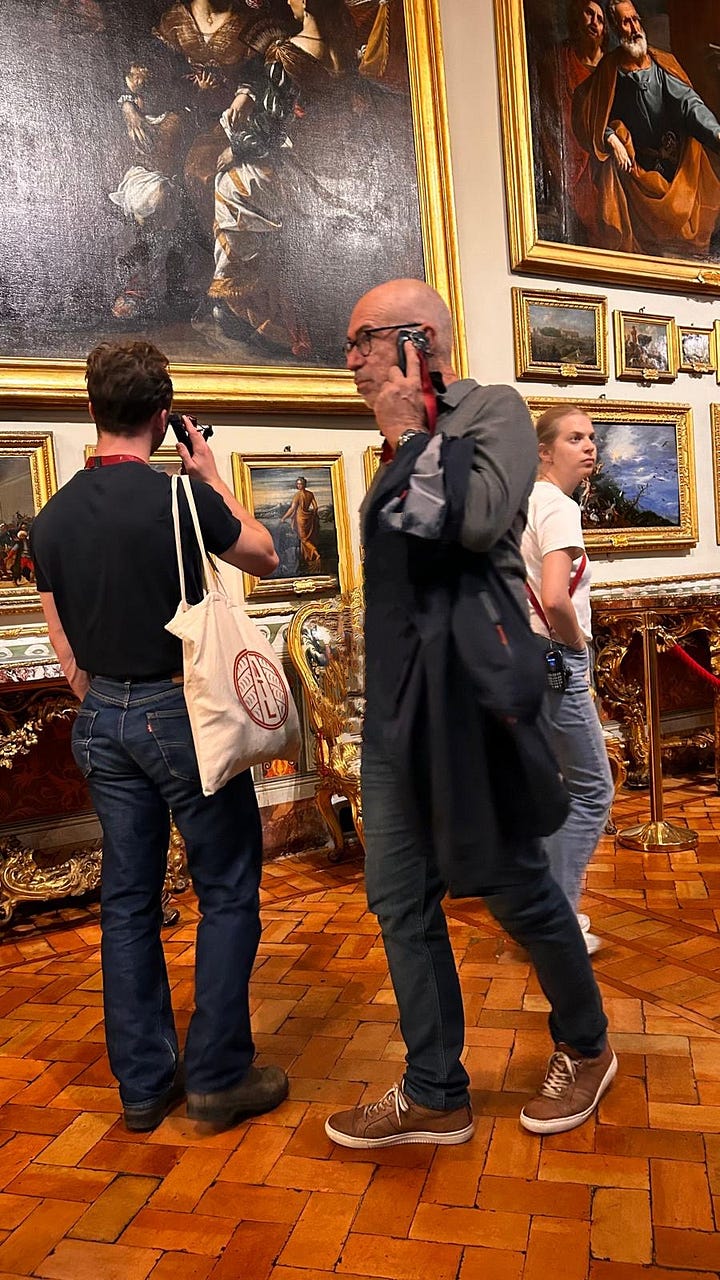
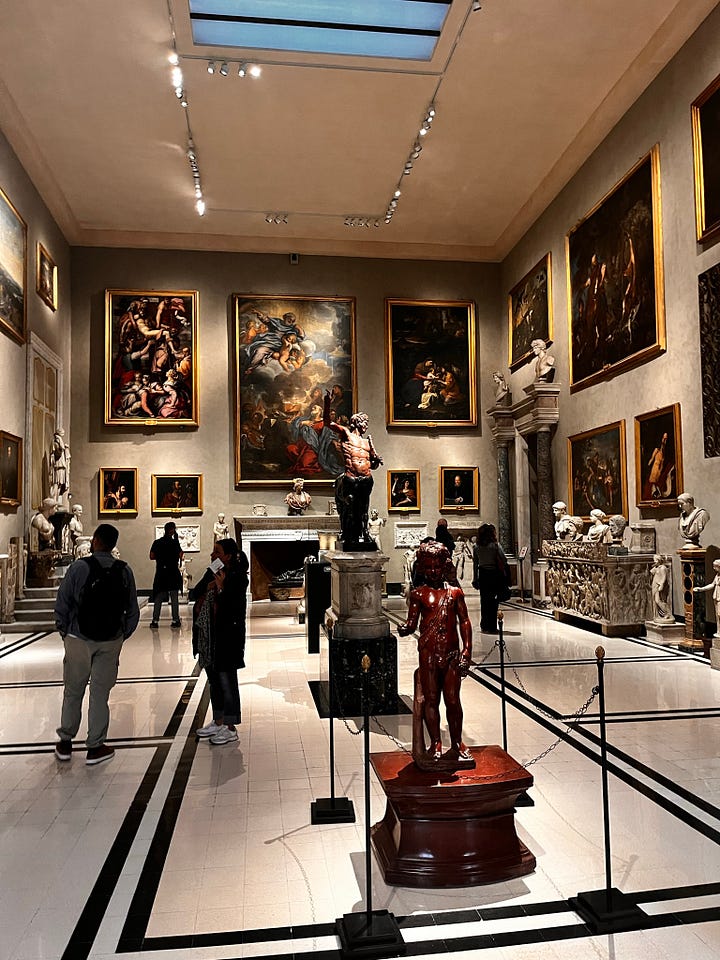
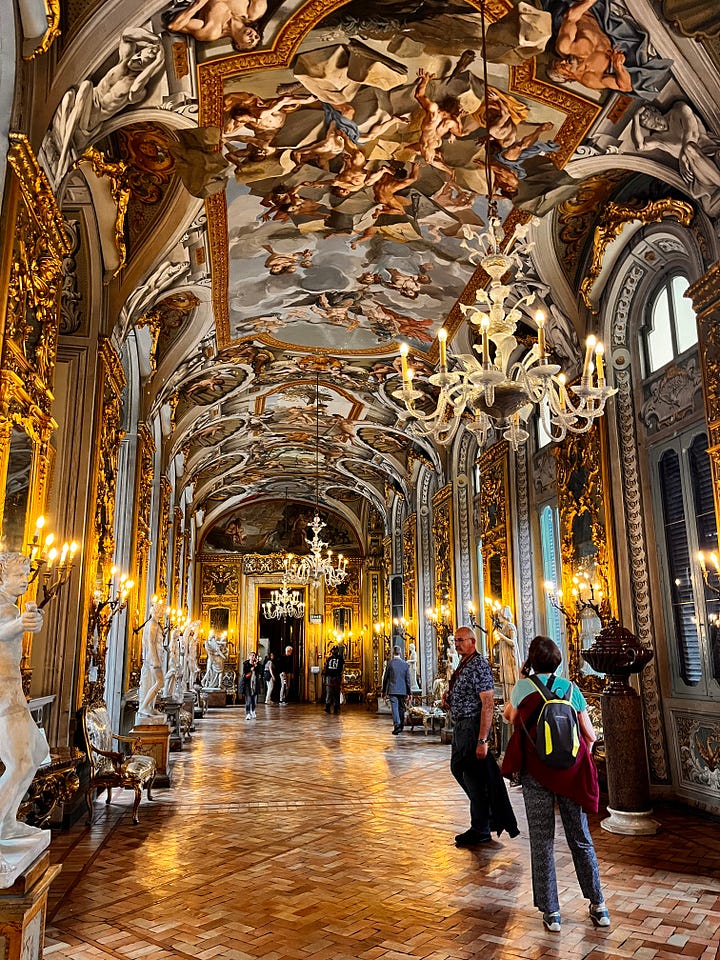
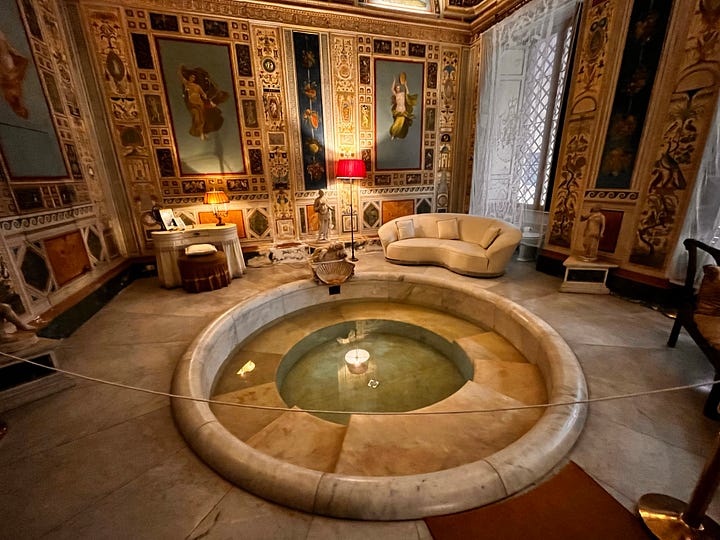
The audio tour made the visit worthwhile as we learned so much. My favorites were the portrait of Pope Innocent X, whose vivid facial expression surely reflected his character, and the three paintings by Caravaggio. Just standing in front of those pieces gave me goosebumps.




We were impressed, to say the least, as we made our way back onto the busy streets. This was the busiest I’ve seen Rome—not just in the main attractions but even in the little side streets. I guess the film festival and a half-marathon scheduled for Sunday contributed to the crowds.
We both love rooftop terraces, so our afternoon pit stop was at a quaint one across from the Fontana di Trevi. A couple of beers and some focaccia while watching the waterless fountain and people strolling by was a treat in itself. Rome is getting a makeover in preparation for the Jubilee Year in 2025. This is evident everywhere, with construction and scaffolding. The most prominent renovation was around Saint Peter's Basilica, as the Jubilee is tied to religious functions. Unfortunately, even the Trevi fountain was emptied of its water to permit work to be done.
What is the Jubilee? The Jubilee Year, celebrated every 25 years, is a significant event in the Roman Catholic Church. It’s a time of pilgrimage, reflection, and spiritual renewal, during which millions of people visit Rome to receive special blessings and indulgences.
Passing in front of the “Bottega di Pinocchio”, I took advantage of the opportunity to do a little shopping for my grandchildren. I never get tired of Pinocchio.
That evening, it was my turn to pick the entertainment, and I scored tickets to Enrico Brignano’s show on the Seven Kings of Rome. Perfect choice! Brignano is Italy’s top comedian, and Tony and I are big fans—we even retell his jokes to each other.
The show took the legendary kings of Rome, from Romulus to Tarquinius, and turned them into comedy gold. Brignano mixed ancient history with modern-day quirks, proving that even though centuries have passed, human behavior hasn’t changed much. Tony was laughing so hard, I thought he might start quoting Roman law.
To our pleasant surprise, the streets were almost empty after the show. Not ready to call it a night, we wandered the cobblestone streets, looking for an open bar for a nightcap. This was probably the highlight of the weekend. While people sleep in Rome, the city itself never does. Its quietness brings the marvels of the city alive, with a silent but palpable energy radiating from the majestic buildings.
With our footsteps echoing, we walked for a few hours, recounting stories of our family—where we’ve been, what we’ve done, and sharing a few confidences along the way. Eventually, we found an open bar, ordered a bottle of champagne, and observed the city sleeping.
Sunday
After breakfast, we made our way to the Vatican. I always love a peek at St. Peter's Basilica. Its vastness is surreal.
I purposely took Borgo Santo Spirito to show Tony the “Ruota degli Esposti”. The “Ruota” (or Foundling Wheel) was a system widely used in Italy, including Rome, from the Middle Ages until the 19th century. It allowed mothers, often impoverished or in difficult situations, to anonymously abandon their newborns at churches or hospitals without facing judgment or legal repercussions.
These wheels were typically built into the walls of charitable institutions such as convents, orphanages, or hospitals. A mother could place her baby in the wheel, rotate it, and the child would be safely received on the other side by nuns or caretakers.
Rome, as the heart of the Catholic Church, had several such foundling wheels. The most famous one is located at the ““Santo Spirito in Sassia”“ hospital, near Vatican City.
We wrapped up the weekend with lunch and a drink with two very special people: our niece Claudia and her mom, Celia, who were also visiting Rome for a few days. Where did we meet, you ask? Naturally, on yet another rooftop terrace.
As we parted in the late afternoon and headed for the train station, we hugged. The taxi driver's words from Friday echoed in my head:
“So, are you coming back home?” he had asked.
I guess we are...
Arrivederci until next Saturday—always observing, always sharing, always sipping, always a tale from an Italian coffee bar and beyond.
(Thank you, Tony, for providing some great pictures)




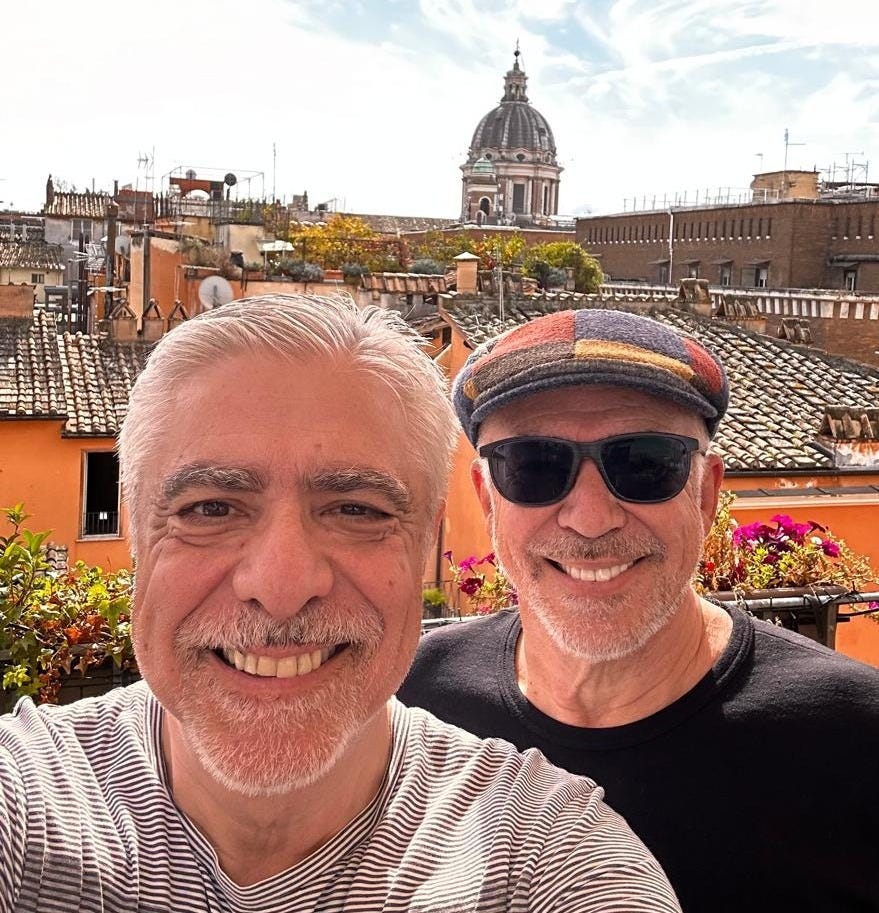
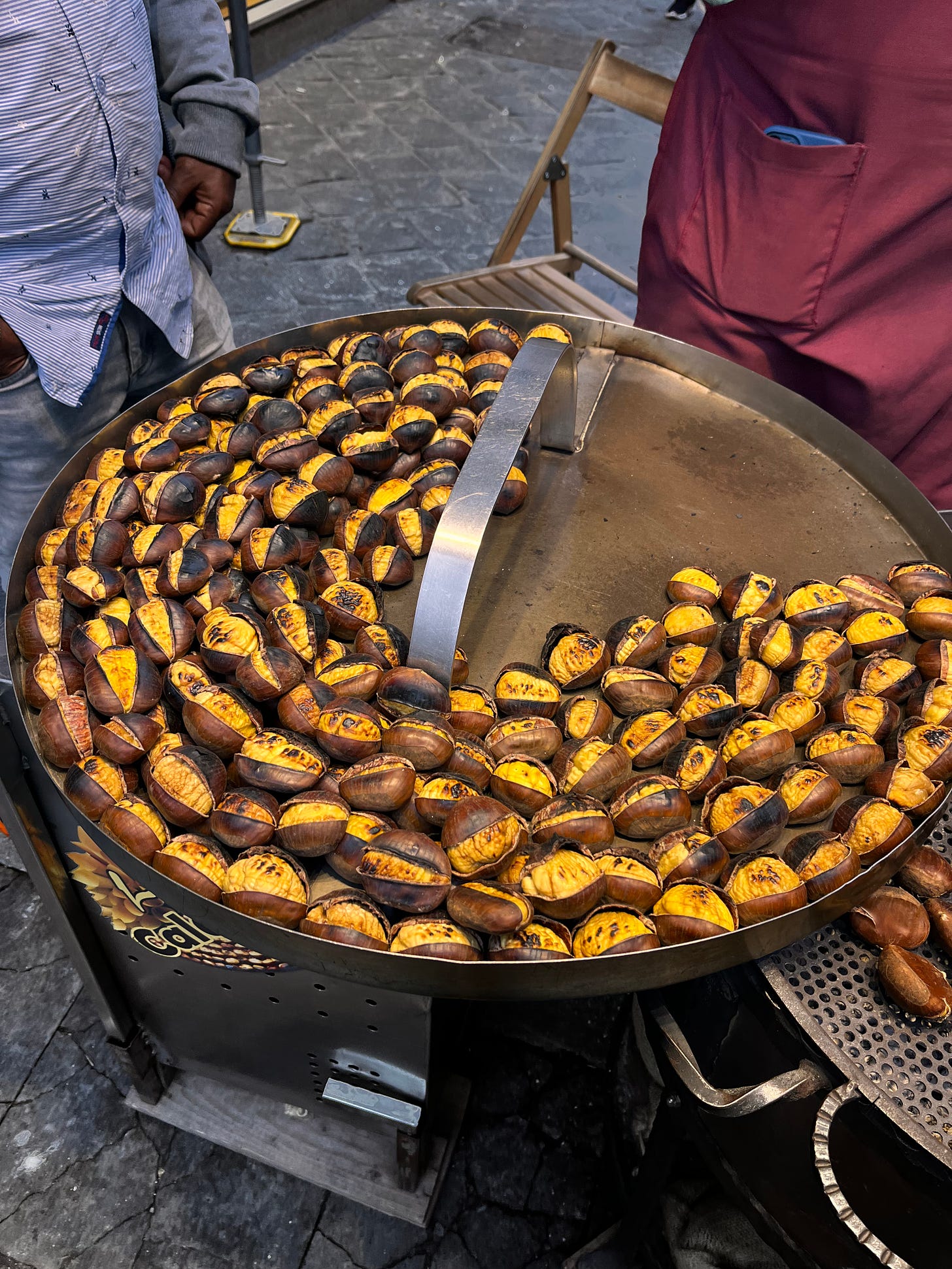
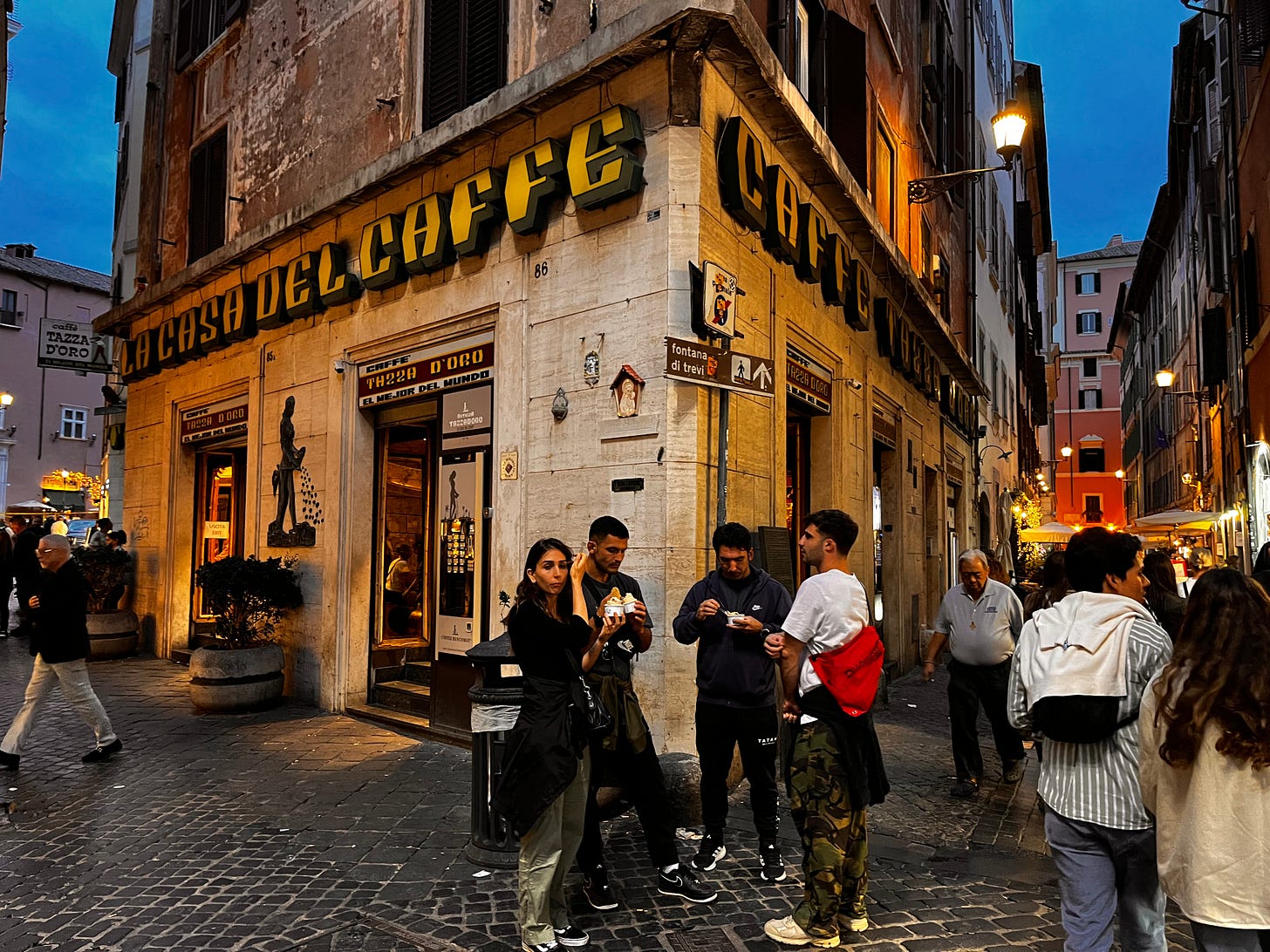

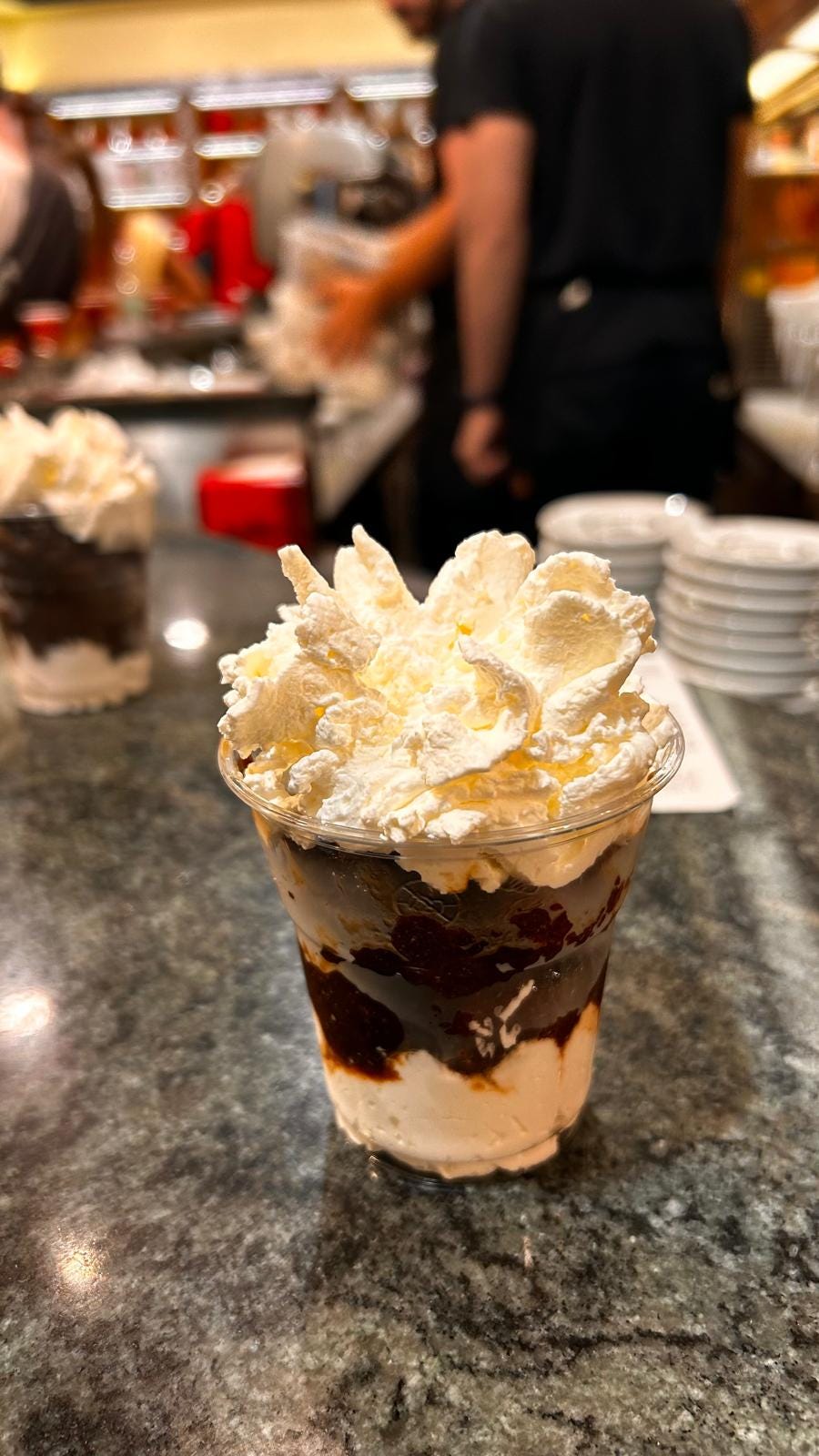
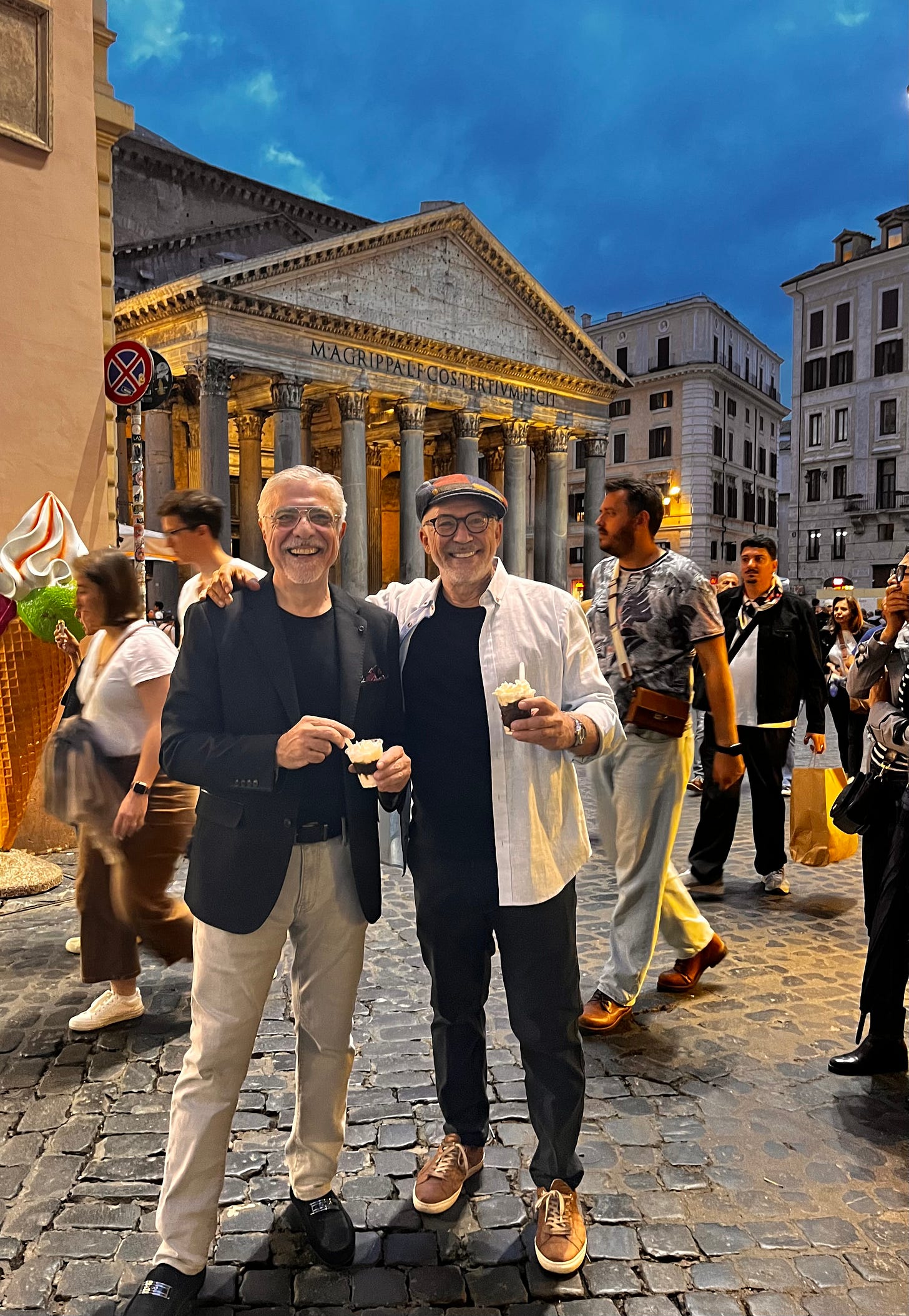
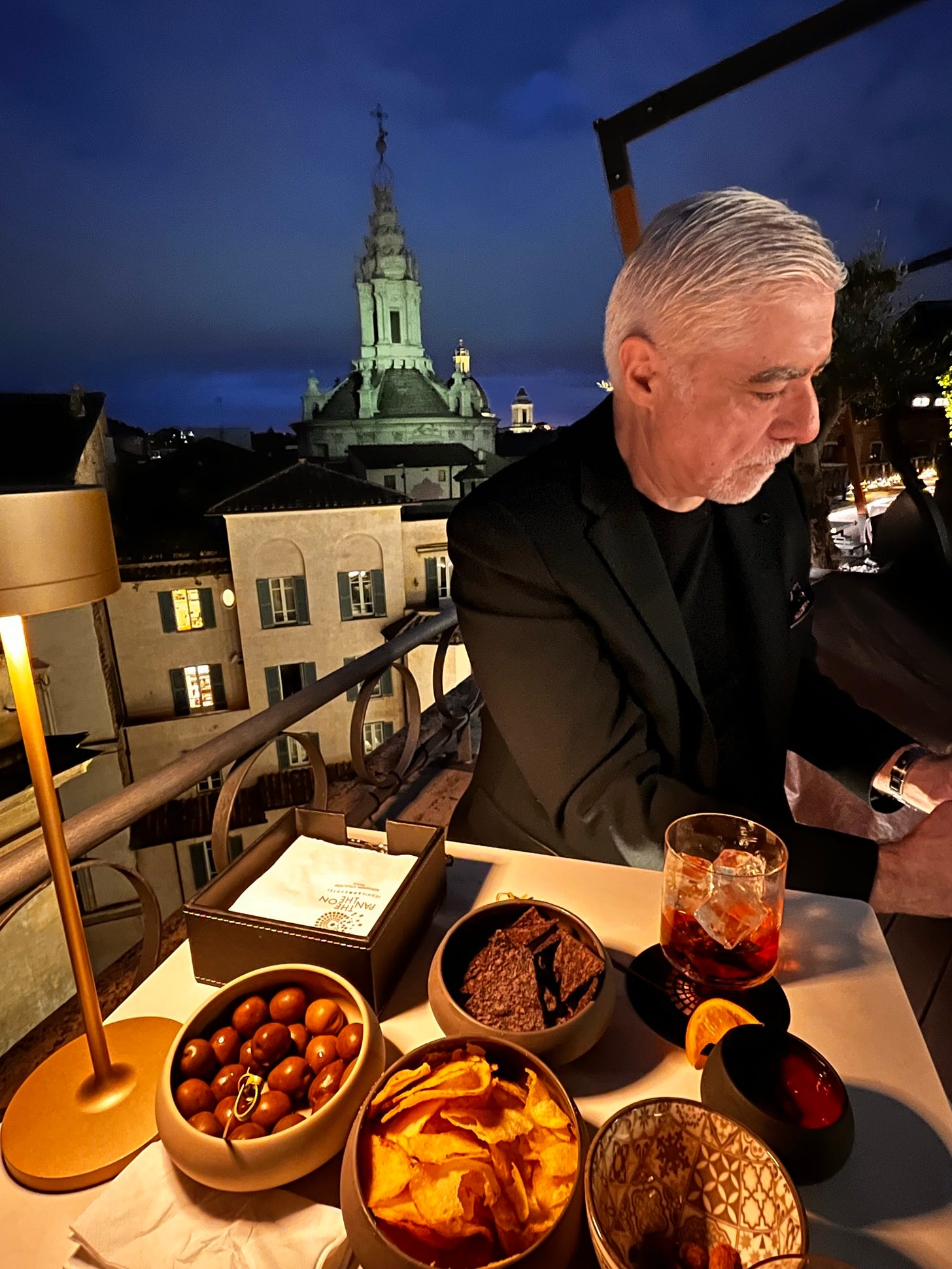

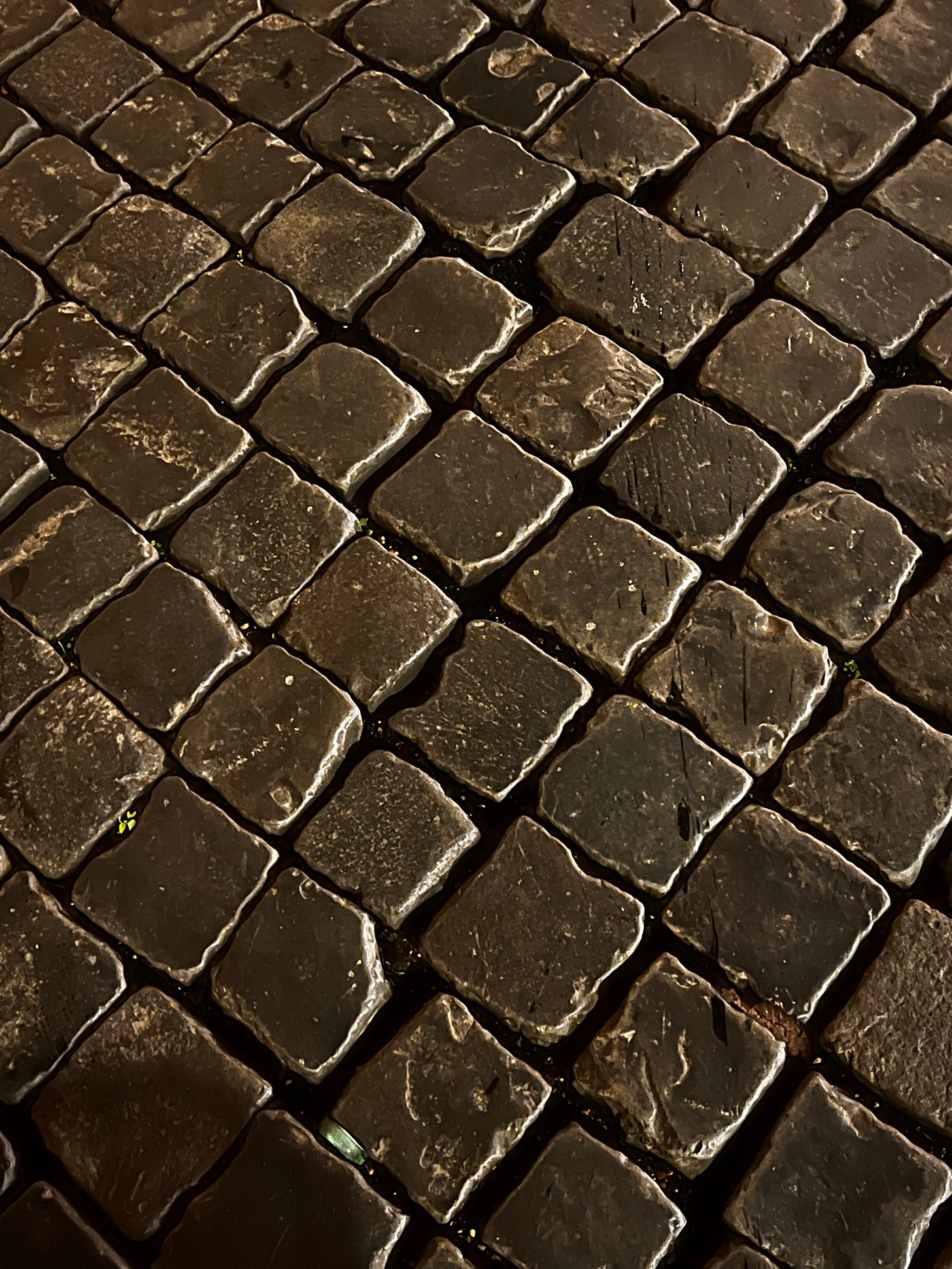


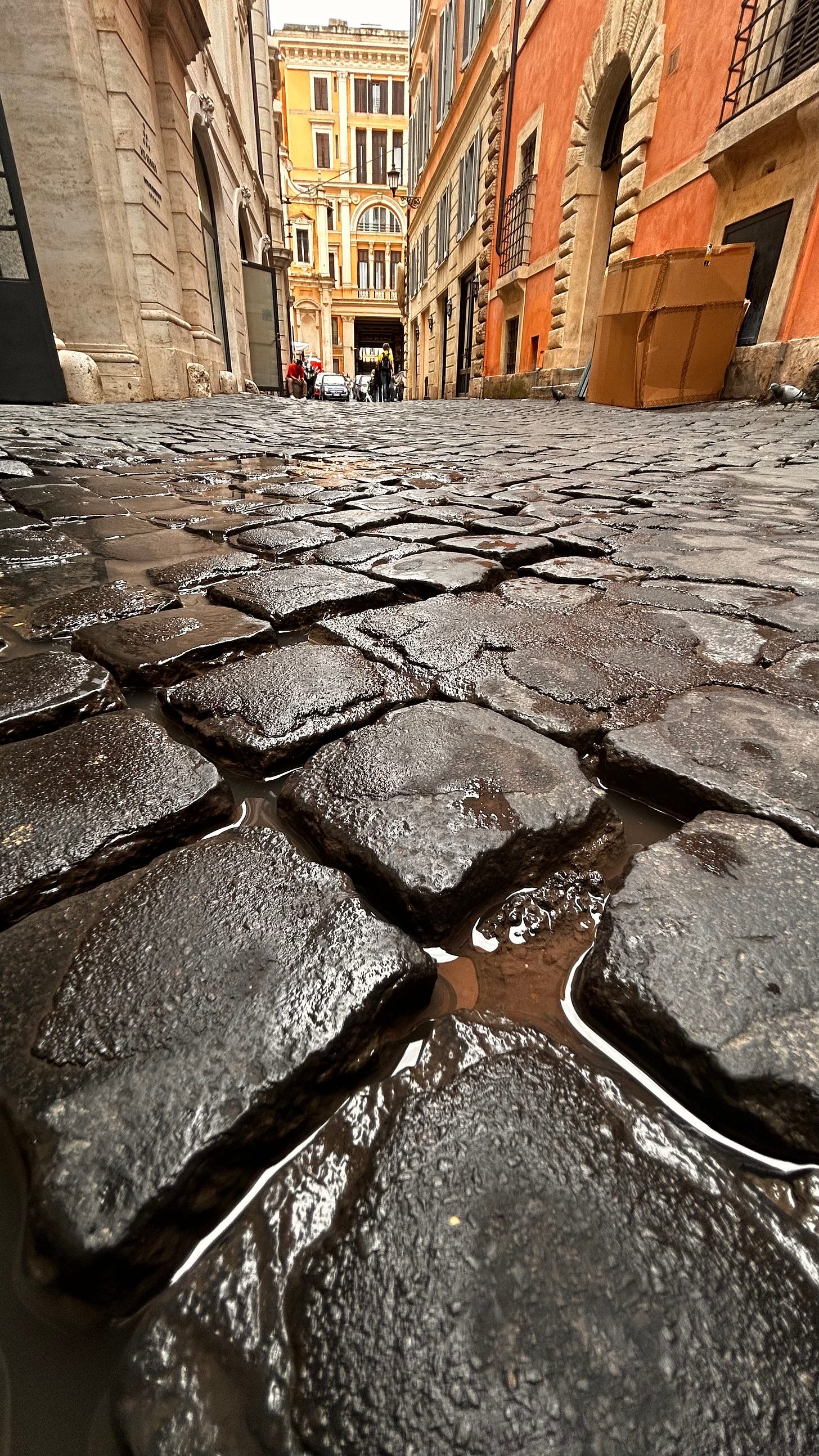
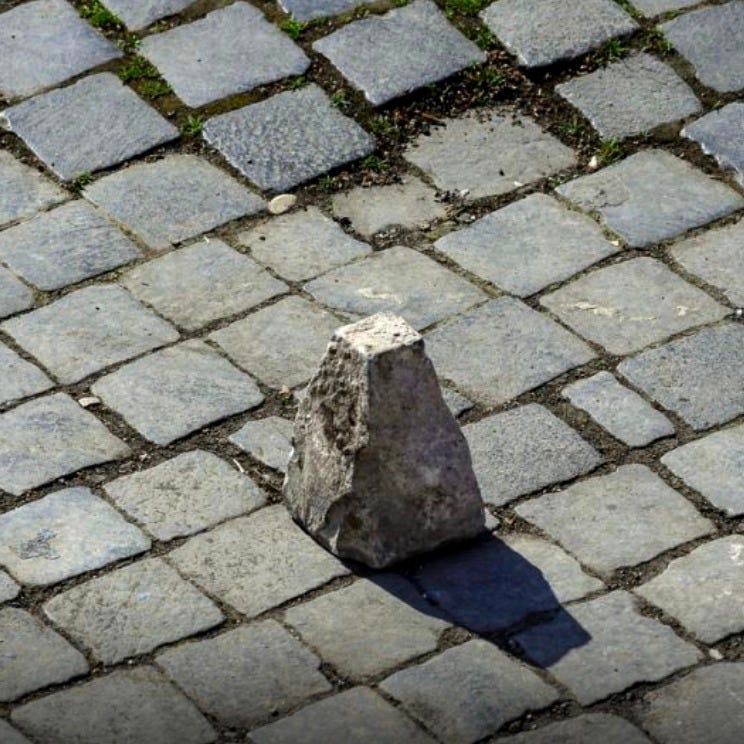

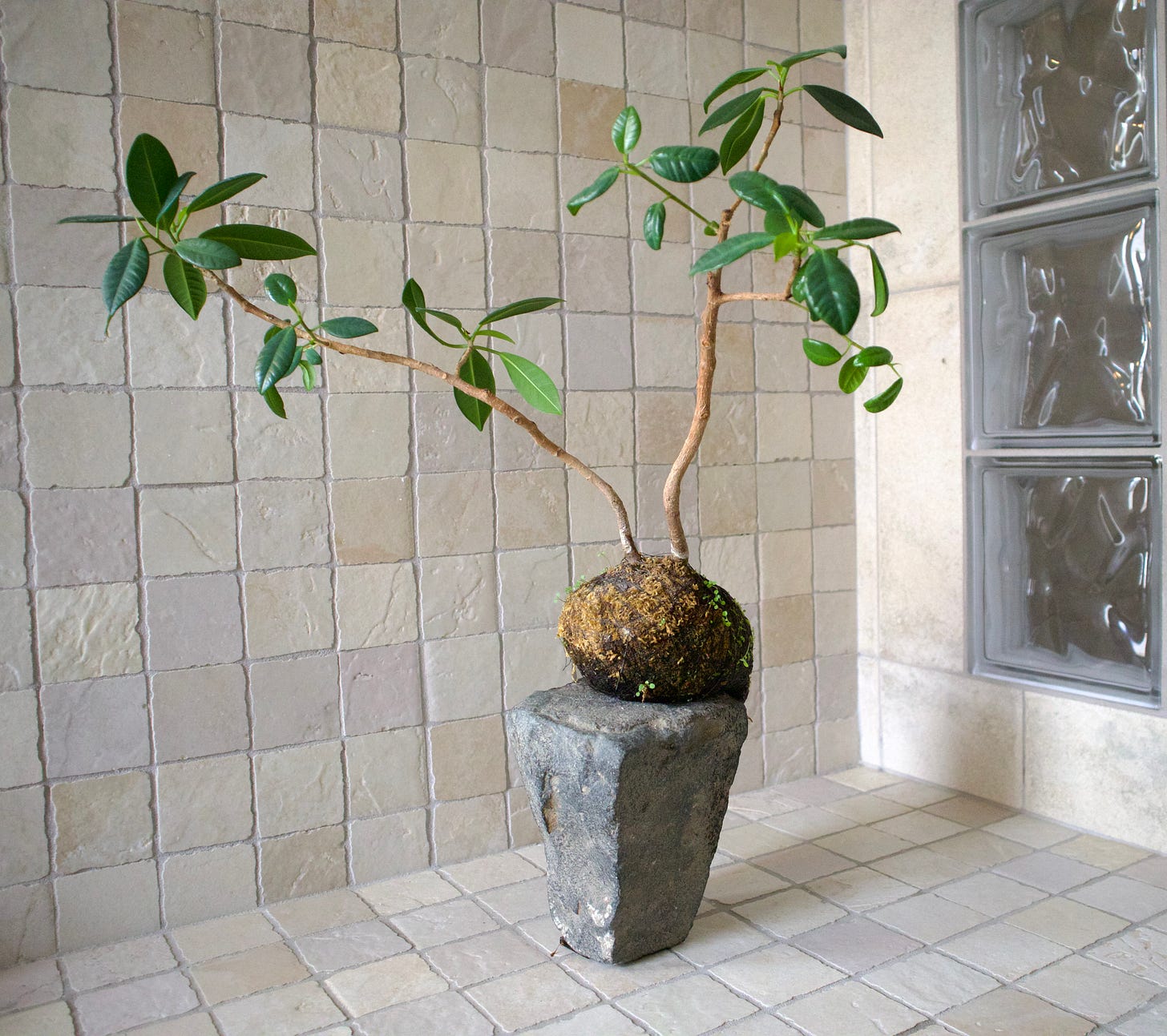
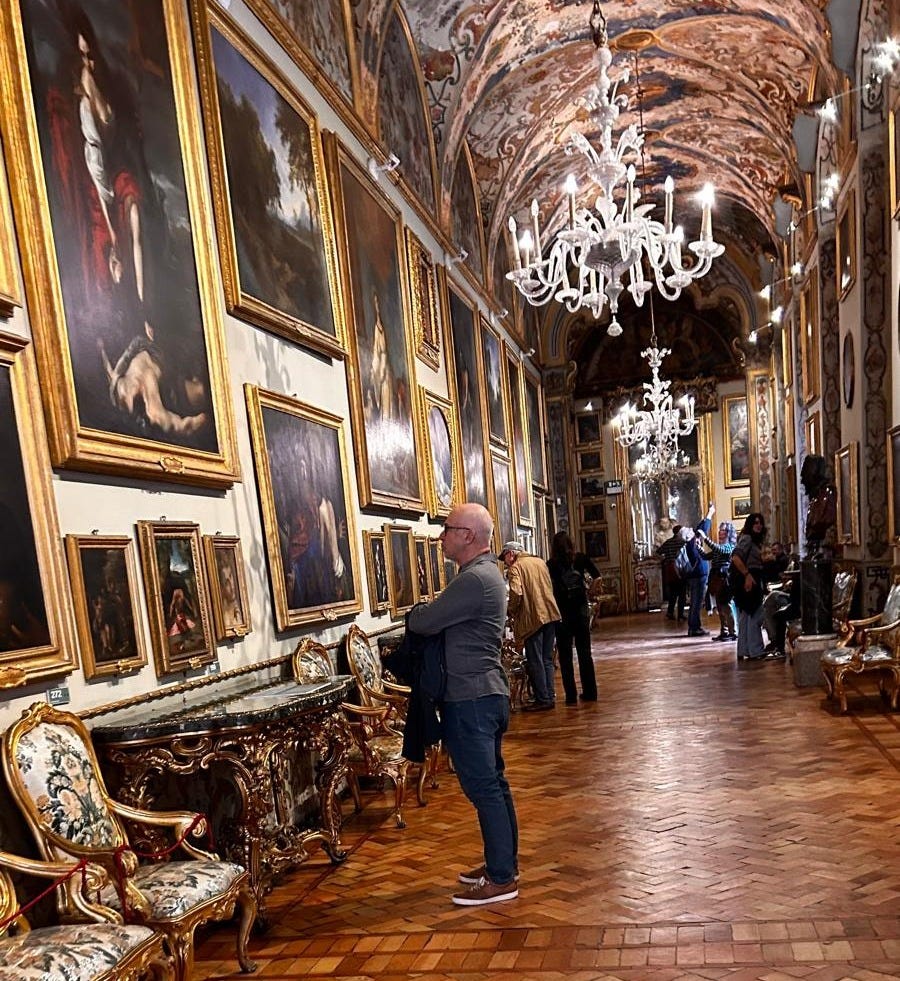
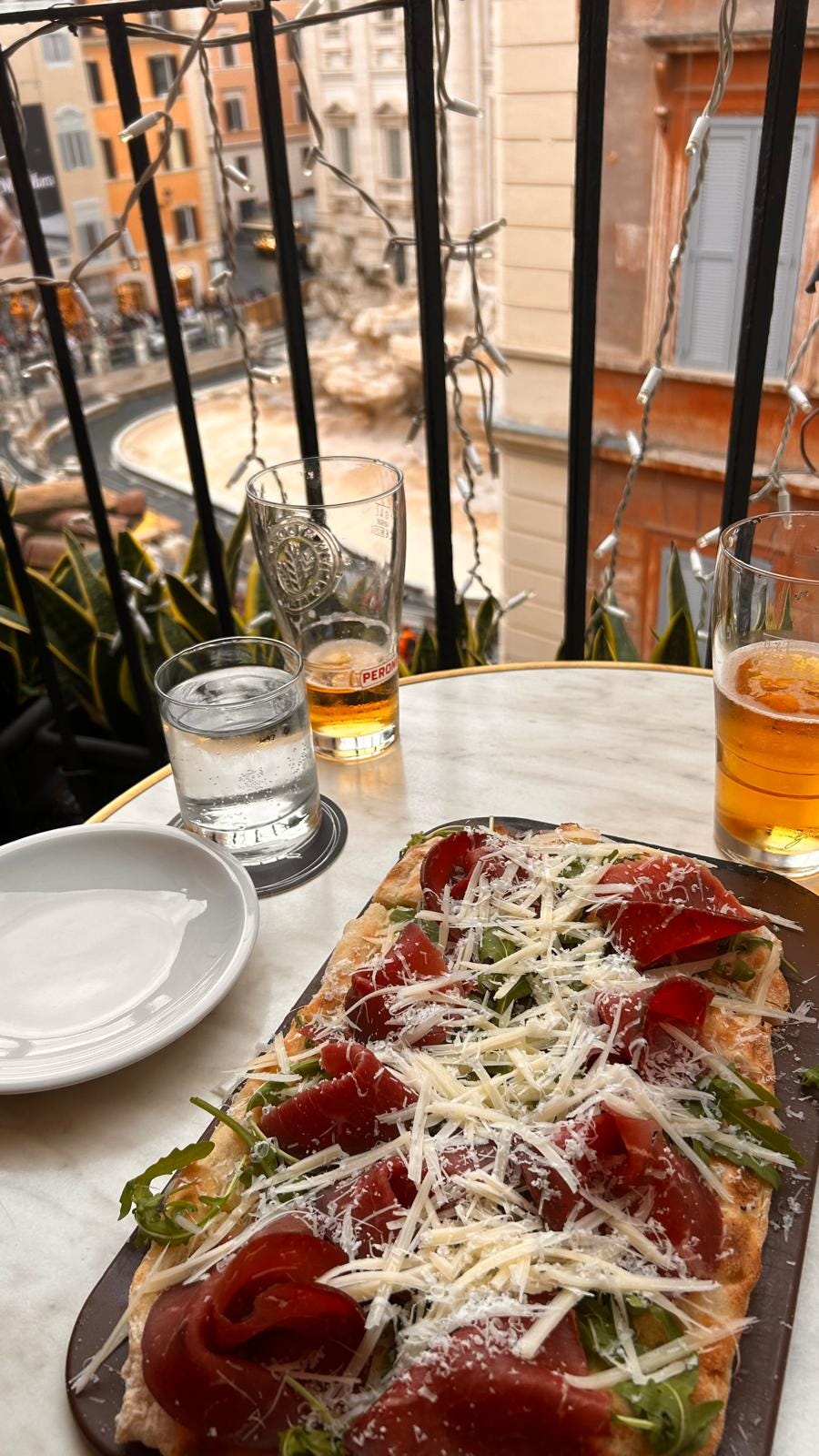
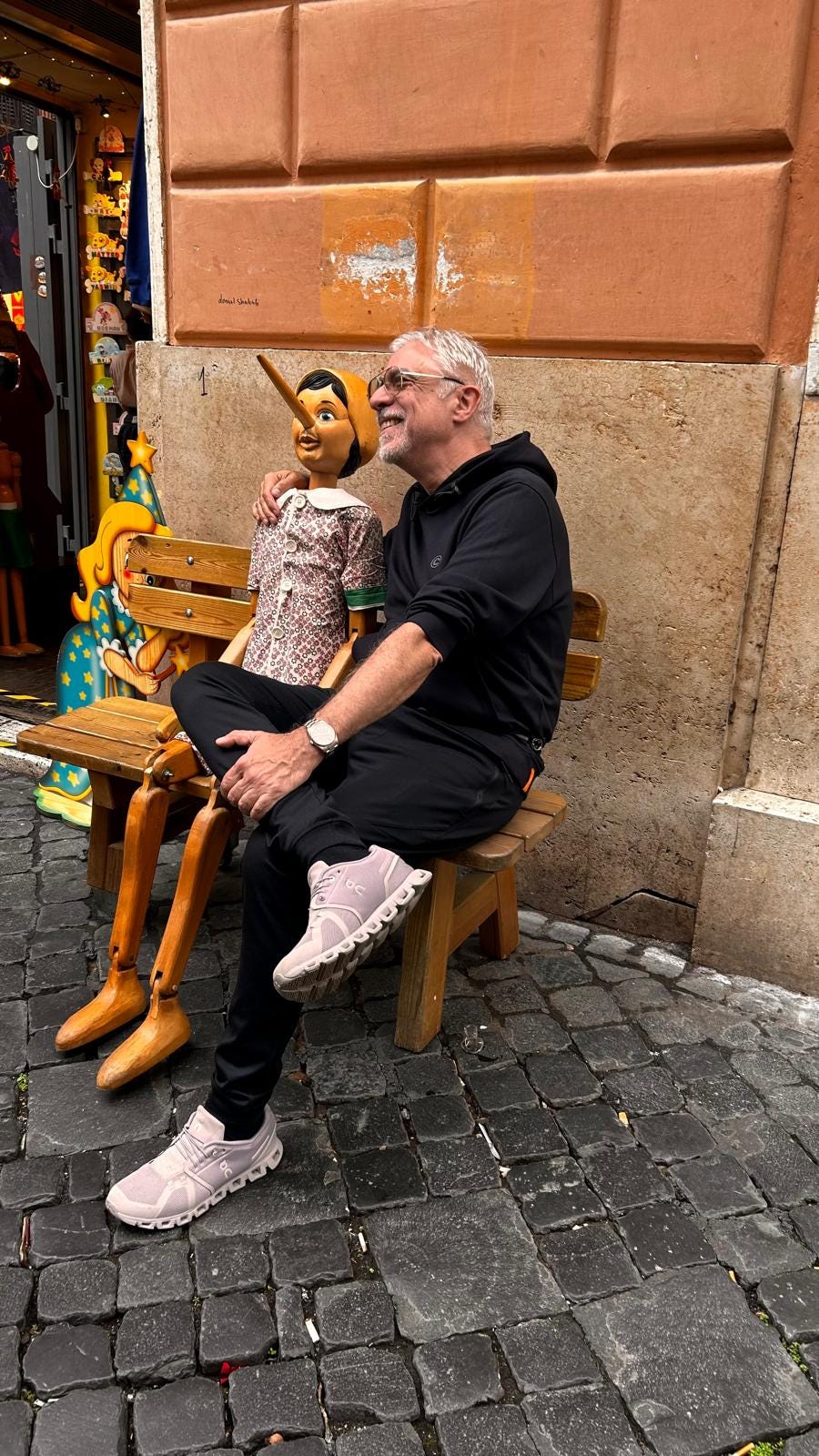
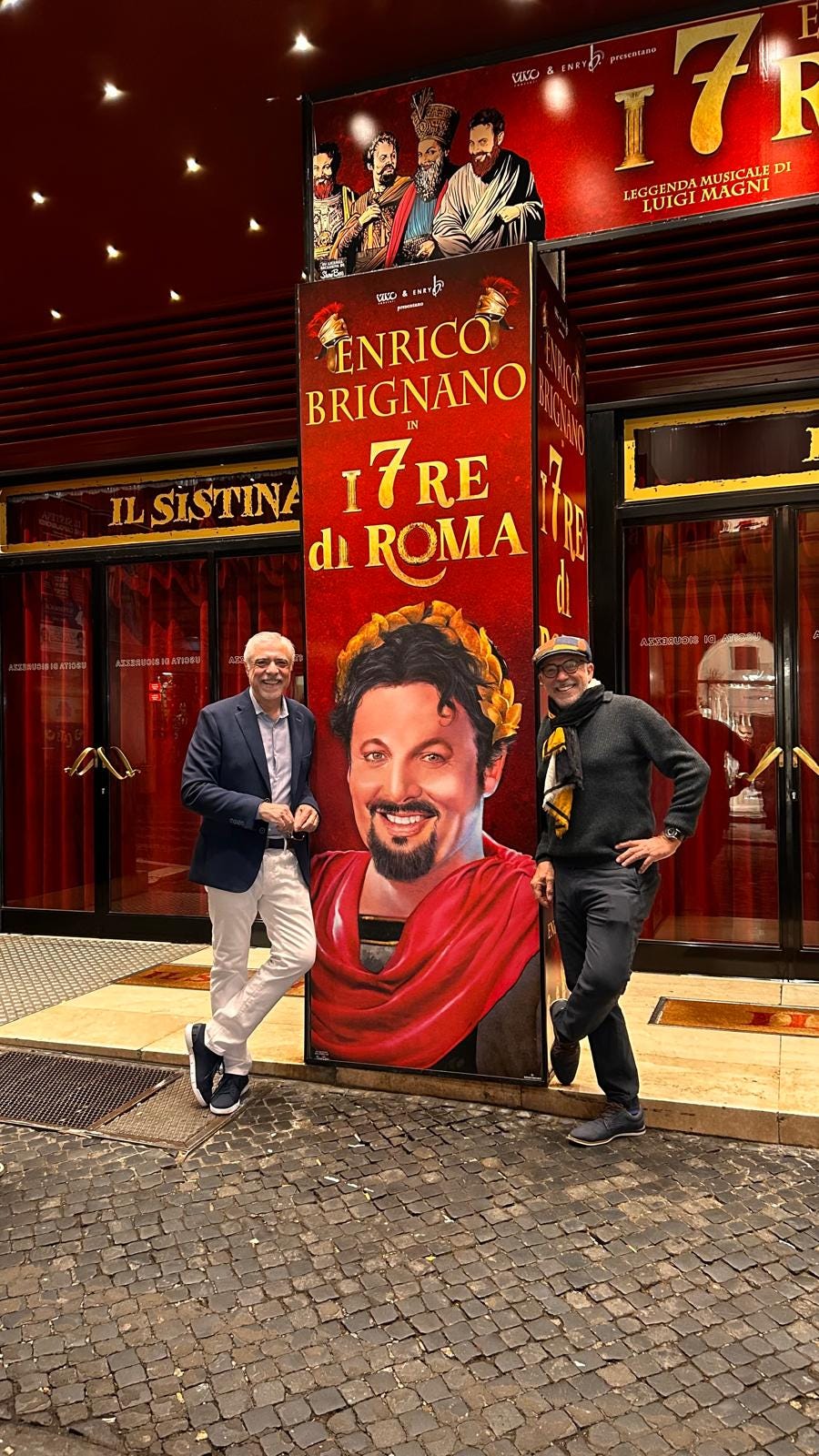
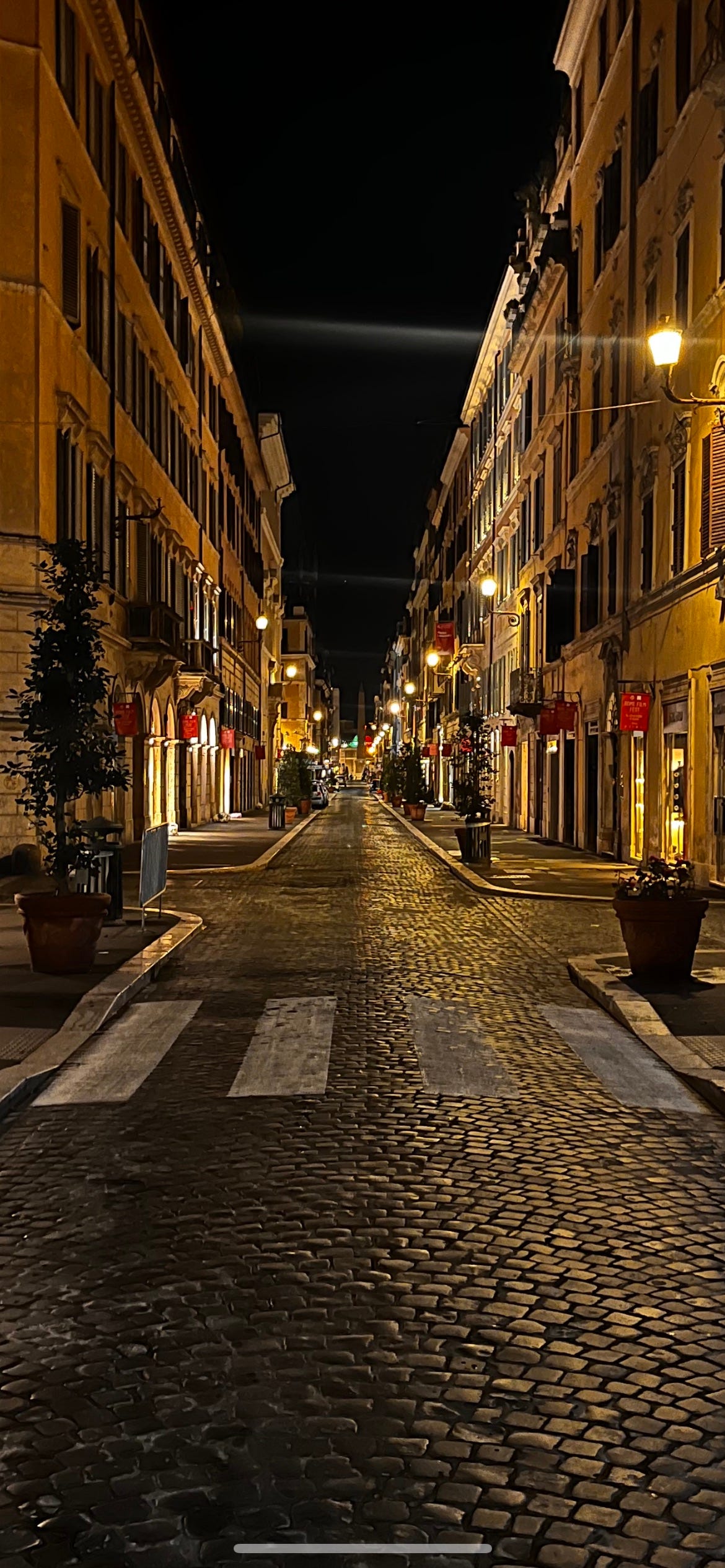
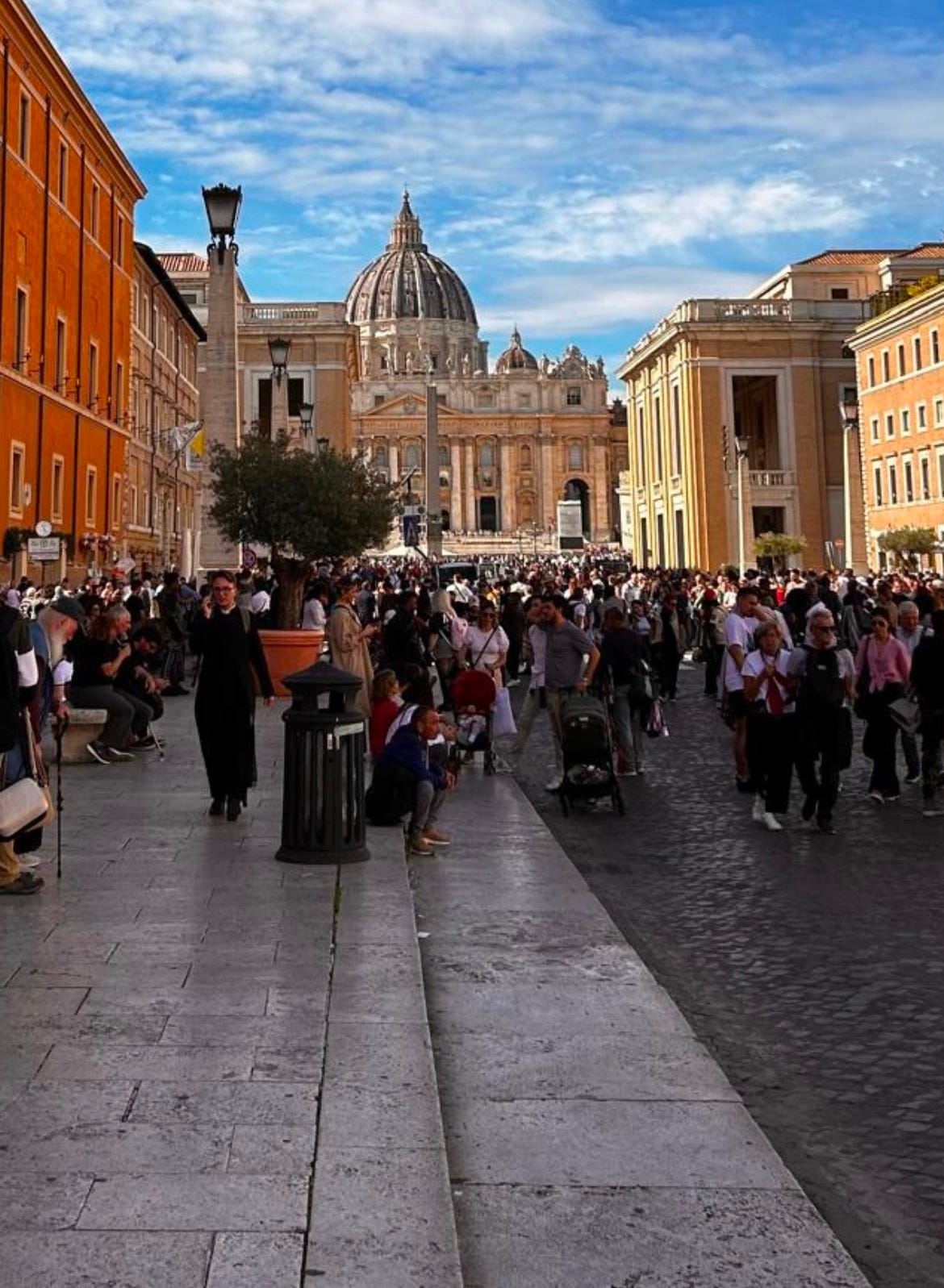




You did it again, Tino! Another great story and collection of photos. A nostalgic trip for me, remembering my life in Rome.
Beau texte, Belles Photos... La Vita e Bella !